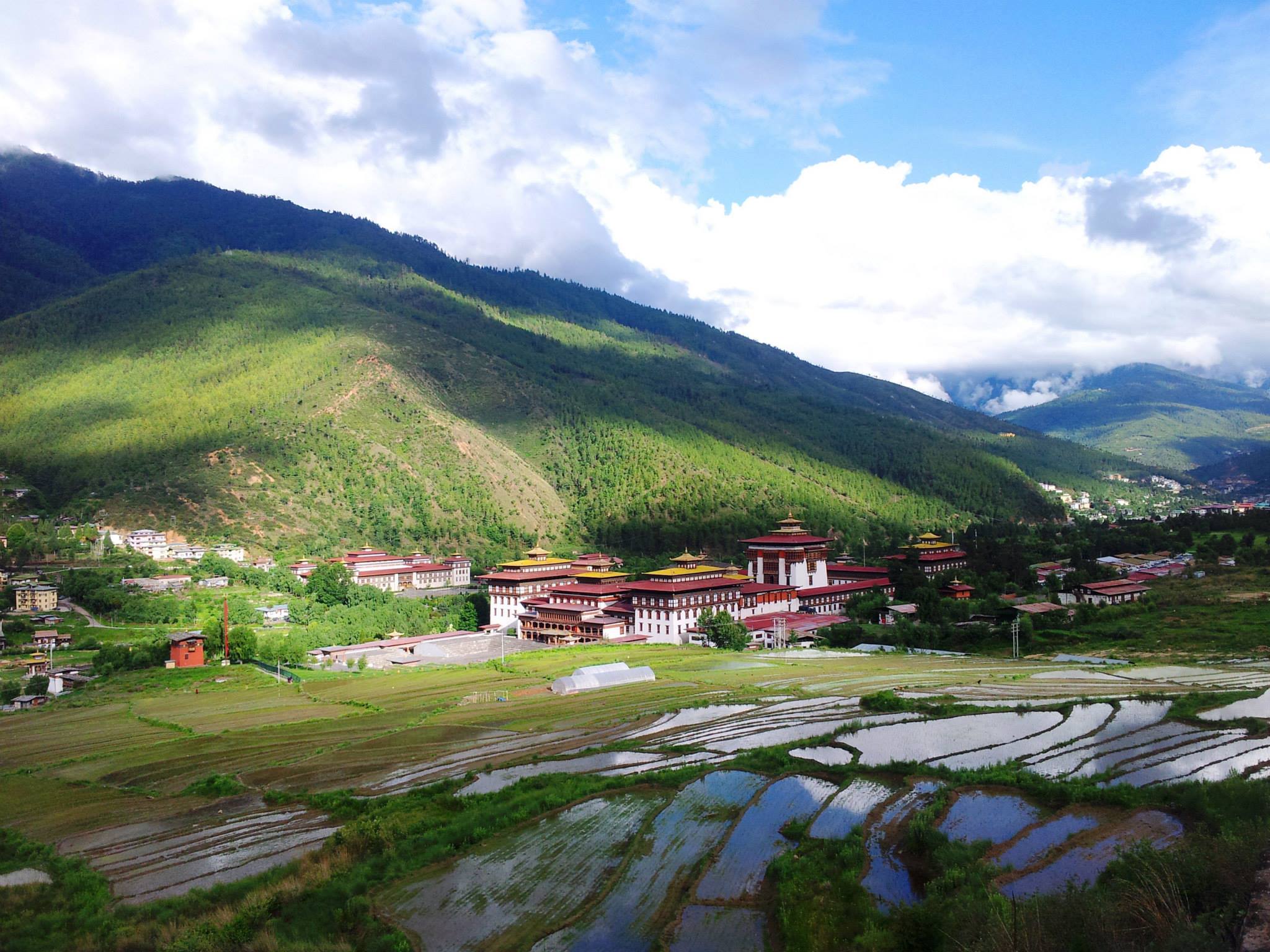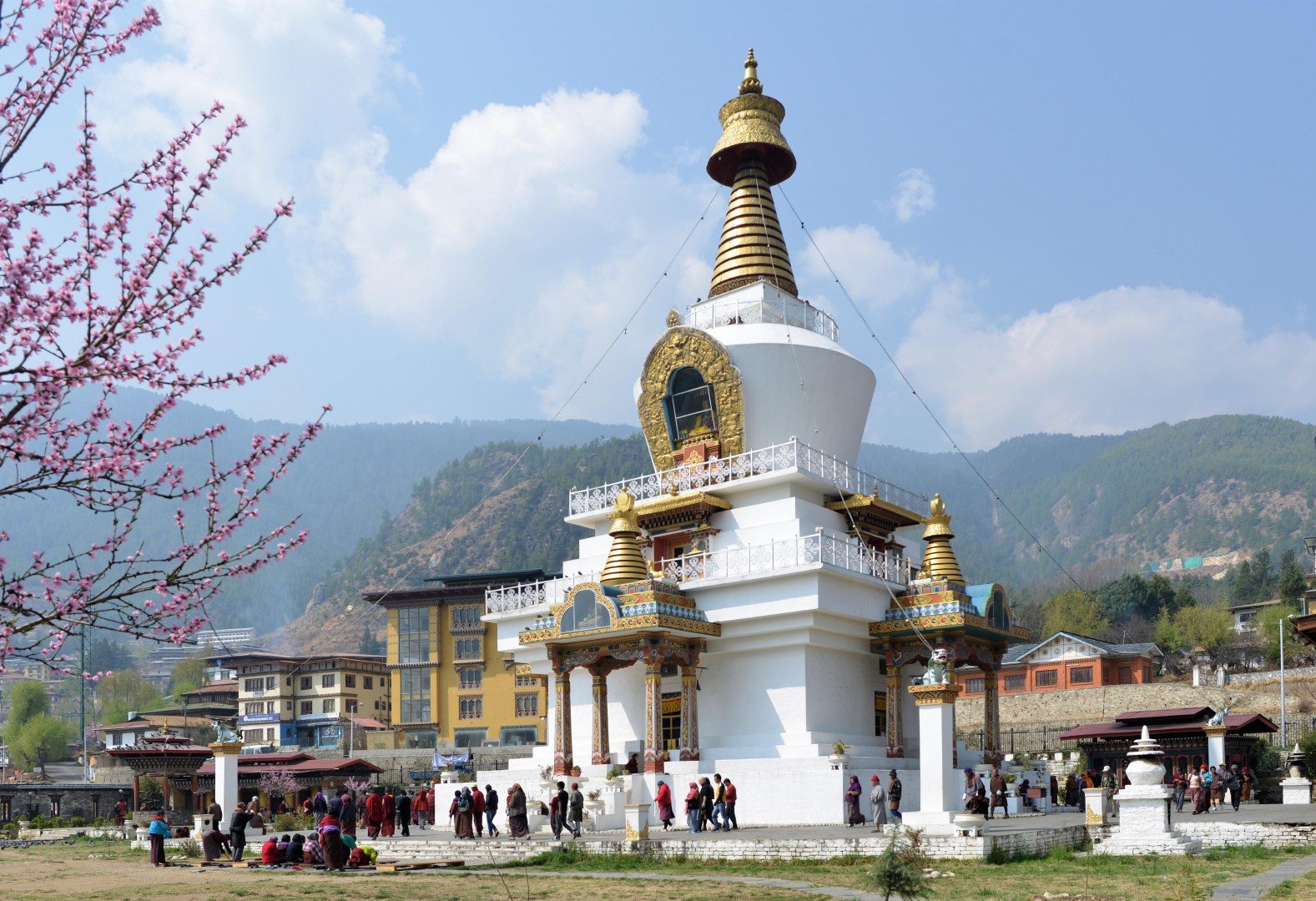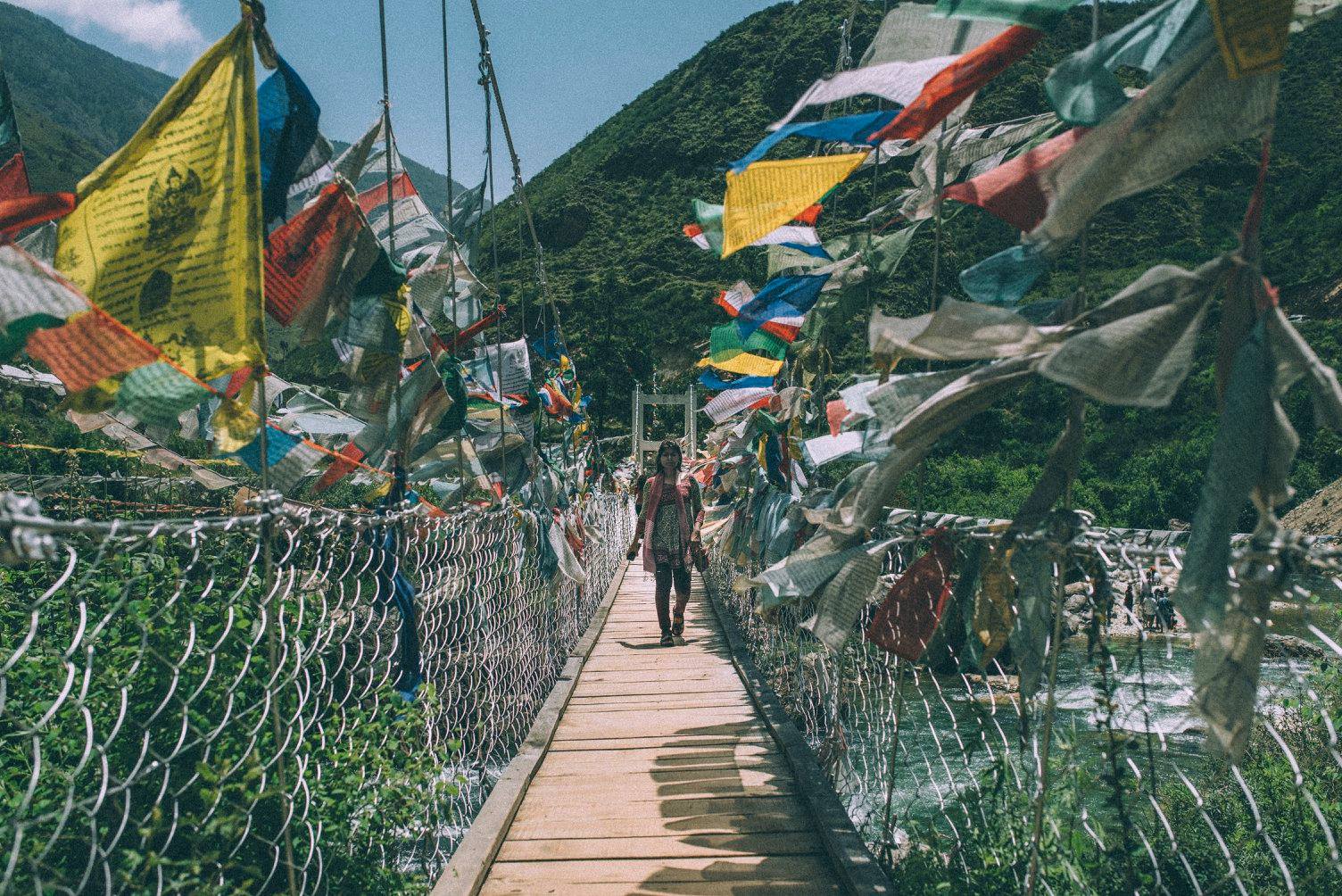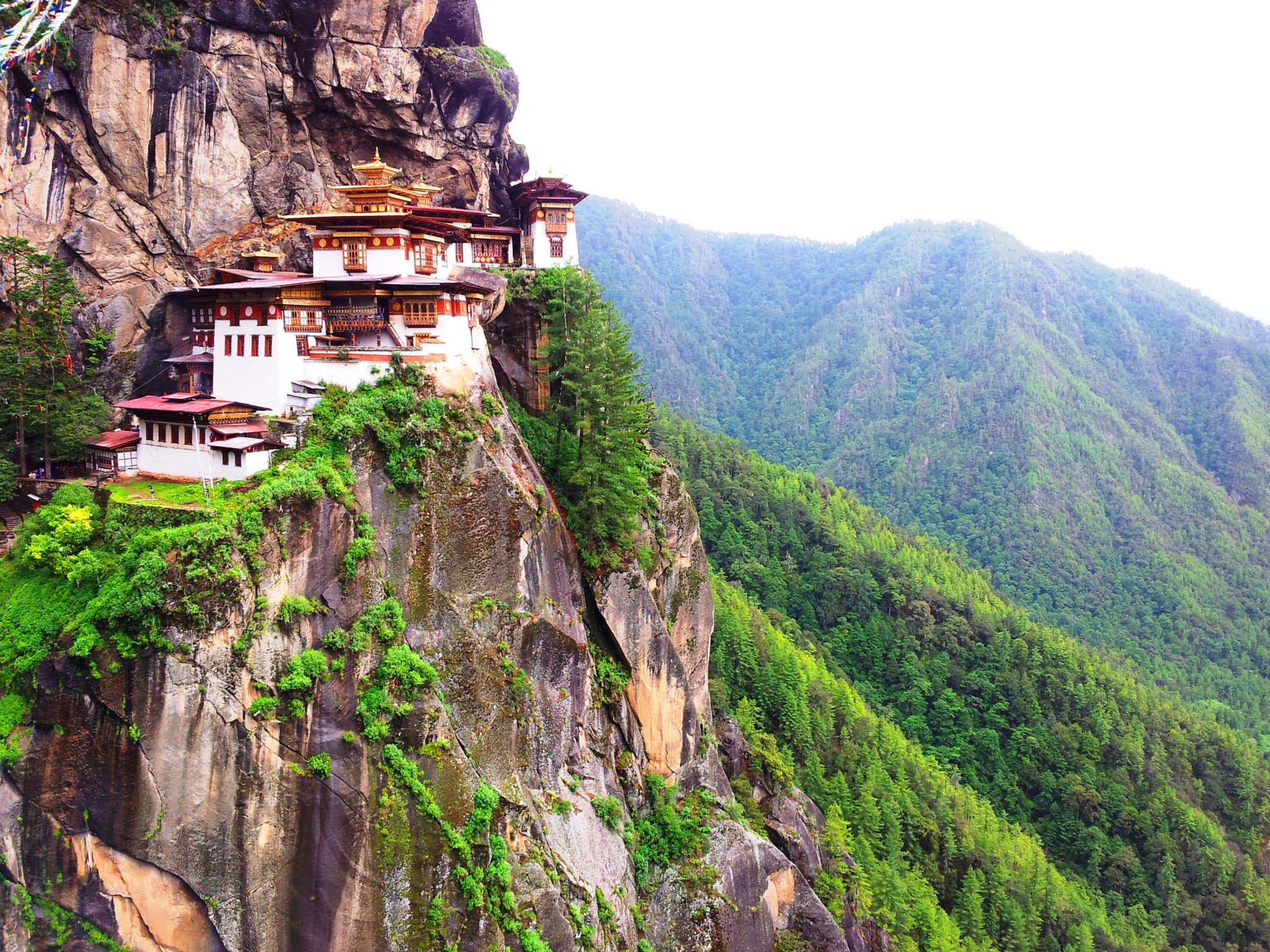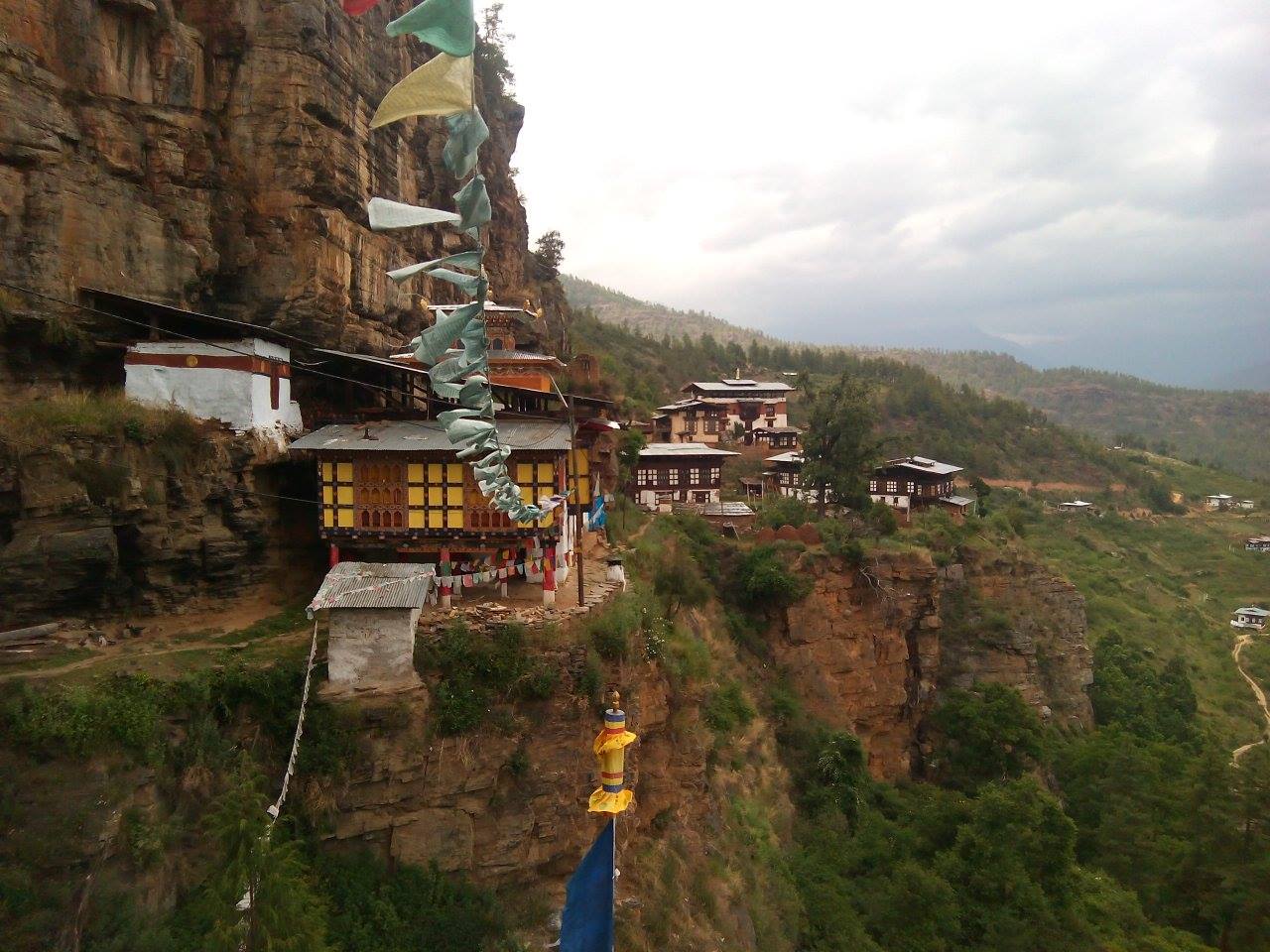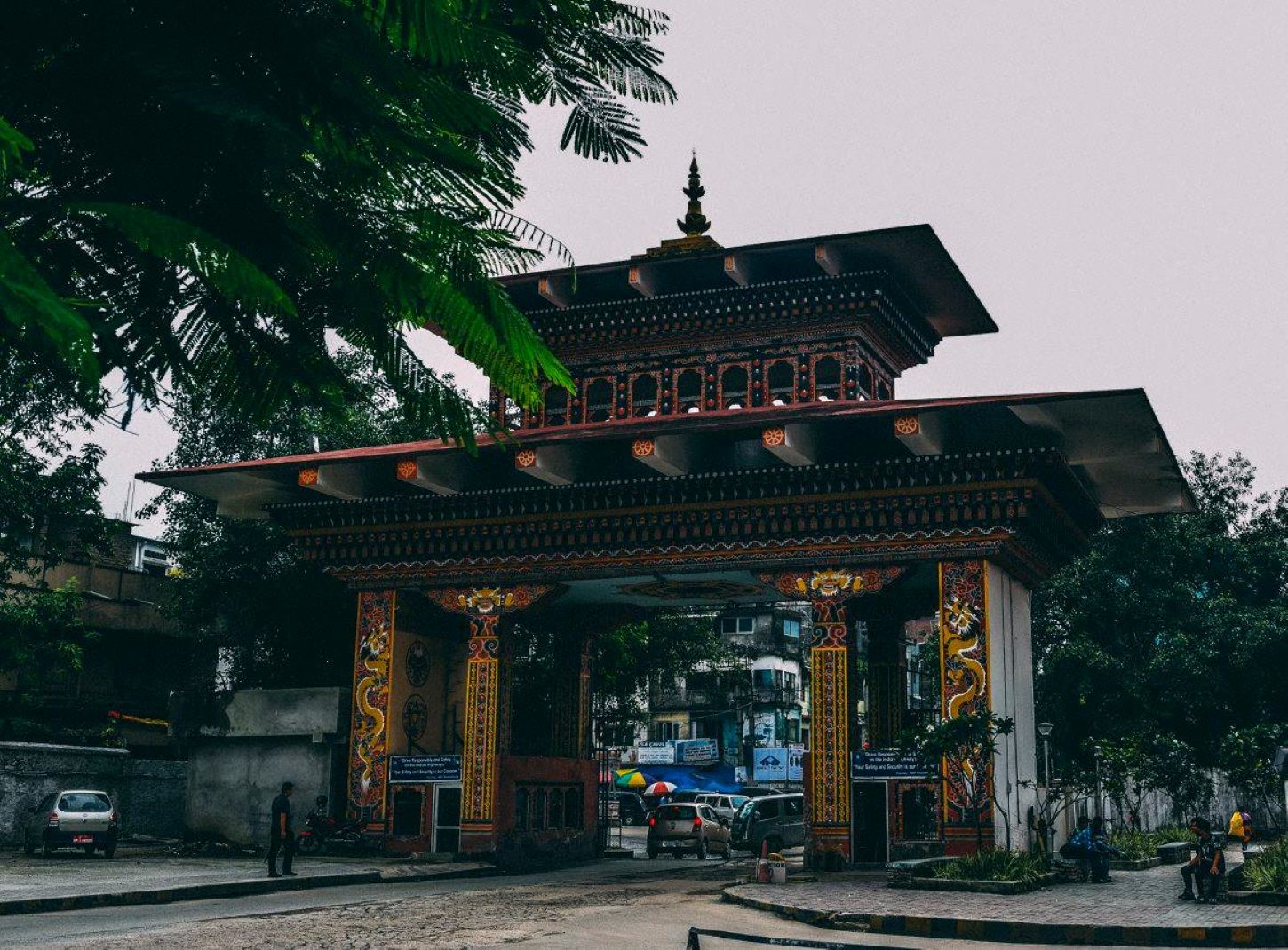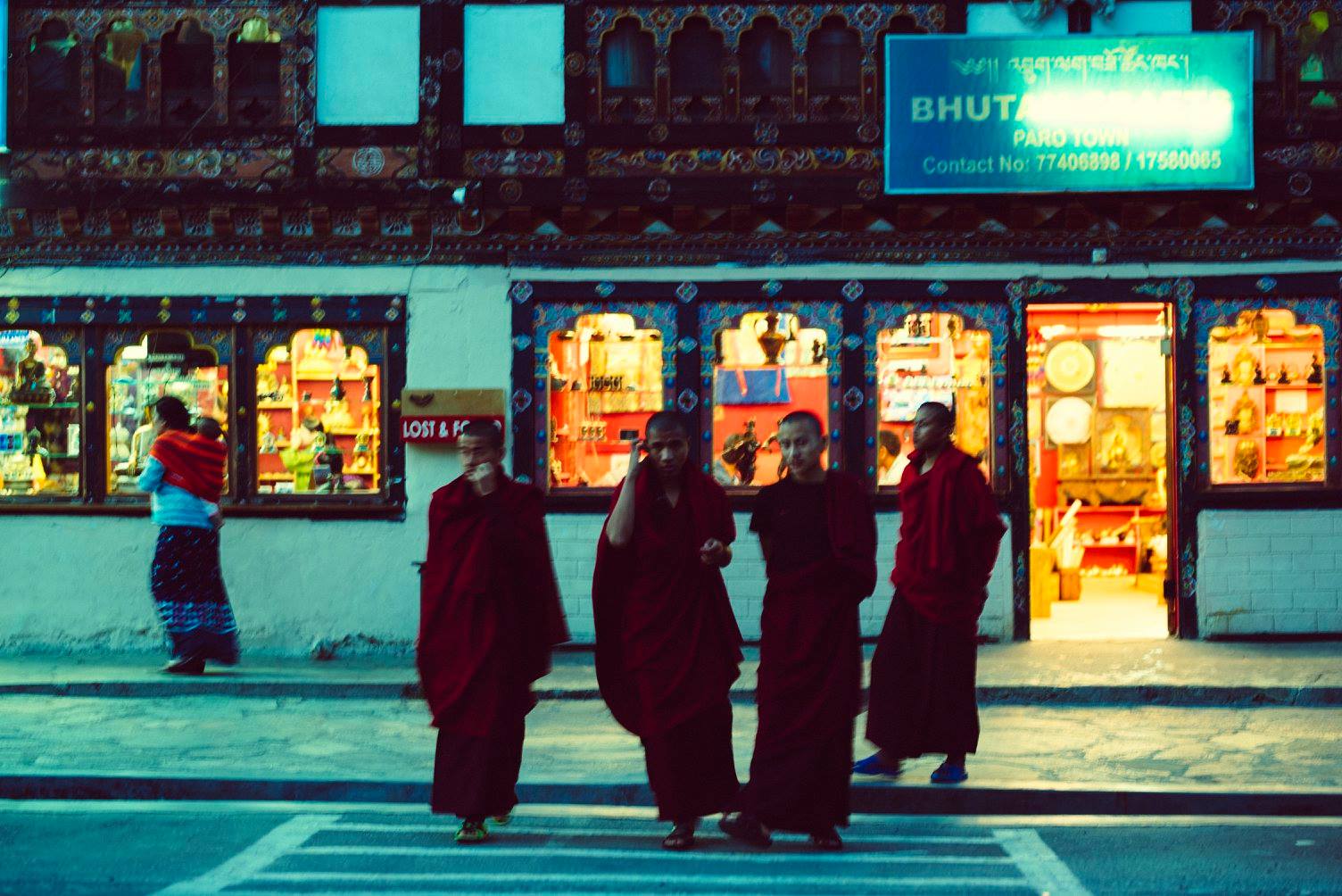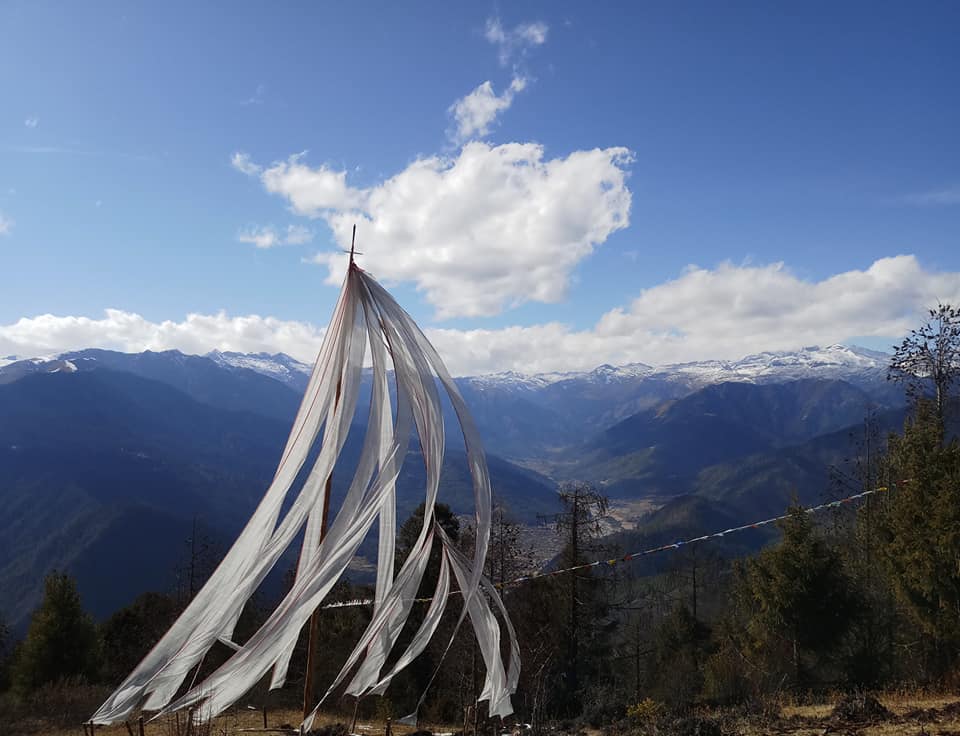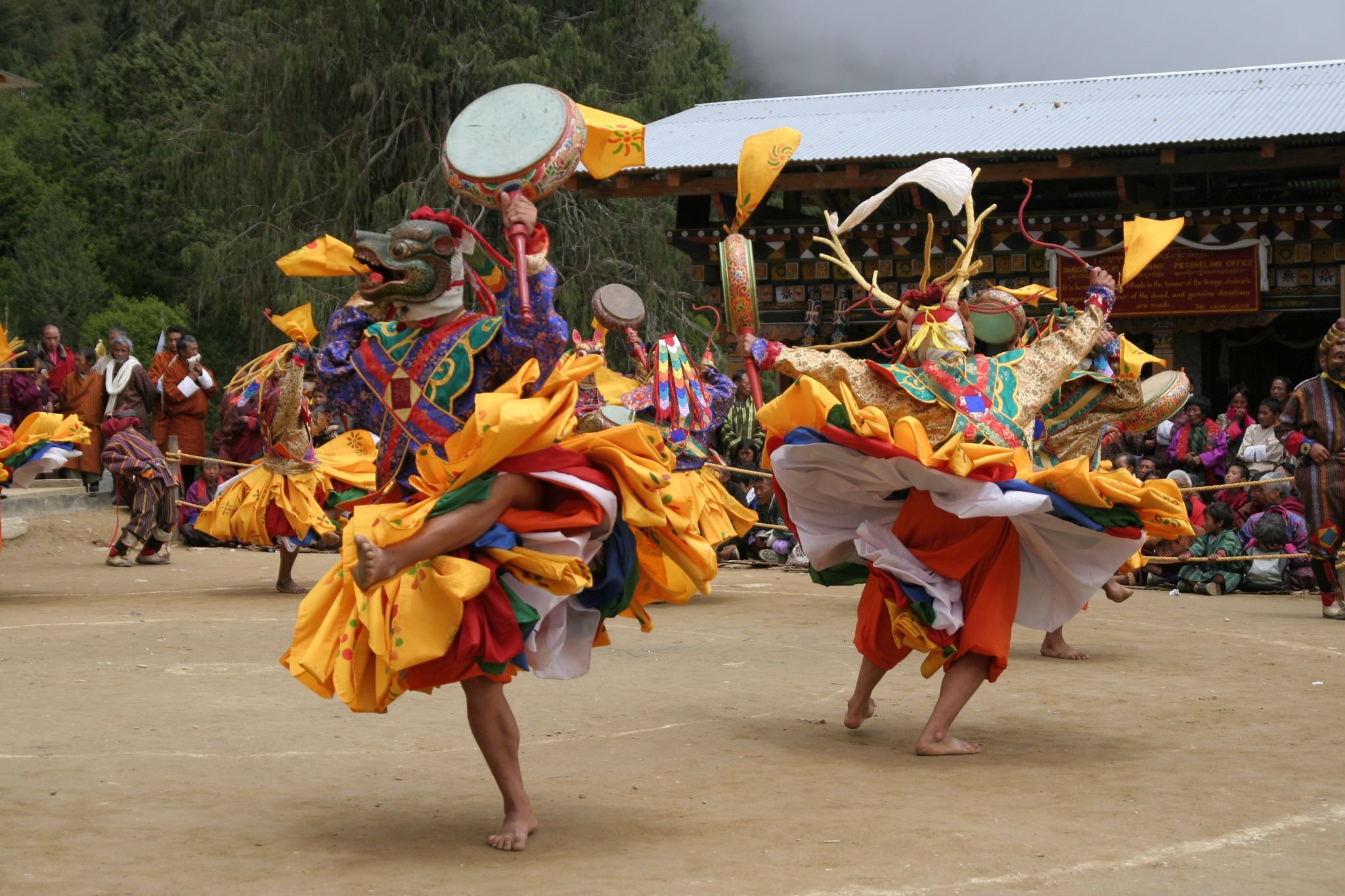Discover the enchanting western frontier of Bhutan, a land where interactions with local villagers, sacred Buddhist temples, and scenic footpaths through tiny mountain villages create unforgettable experiences. This region is adorned with ancient Buddhist temples, red-clothed monks, and warm, friendly smiles. Journey from the vibrant streets of Thimphu to the serene and lush Punakha valley. Uncover the hidden gem of Haa Valley, a tranquil and uncharted destination nestled quietly between Bhutan and China, offering a glimpse into the serene Bhutanese lifestyle. Cap off your adventure with a hike to the iconic Taktsang Monastery, a spiritual highlight of Bhutan.
Day 01: Arrive Paro by Flight & transfer to Thimphu (55km, approx. 1.1/2-hour drive)
Upon arrival in Paro, clear your immigration formalities and meet our representative outside the terminal. Then drive to the capital city, Thimphu. The drive takes you along the Paro Chu until the confluence at Chuzom, from where we head towards Thimphu, the modern capital of Bhutan and the only capital city in the world without traffic lights, instead maneuvered by policemen. This bustling little city is the main center of commerce, religion, and government in the country. Depending on your arrival time, you may visit the Memorial Chorten, constructed to dedicate world peace and in loving memory of the third King, Jigme Dorji Wangchuck, “the father of modern Bhutan.” This landmark is an iconic monument where you can observe a large crowd of people circumambulating and chanting mantras. Other highlights include the Buddha Dordenma, one of the largest statues of Shakyamuni, standing at a height of 51.5 m, cast in bronze and gilded with gold. It overlooks the southern gate of the valley, and within it are placed 125,000 miniature statues. It also features a large prayer hall where Buddha is seated. In the evening, take a leisurely walk around Thimphu’s main street.
Overnight at the hotel in Thimphu (Altitude 2,320 m).
Day 02: In Thimphu
After breakfast, begin your tour with a short drive to visit Tashichho Dzong. This towering fortress, nestled beside the Thimphu Chu, is a magnificent example of Bhutanese architecture and houses the seat of the Chief Abbot, the throne room, and the offices of the King, the Cabinet Secretariat, and the Ministries of Home Affairs and Finance. Originally built in 1216 and reconstructed in 1641 by the political and religious unifier of Bhutan, Shabdrung Ngawang Namgyal, it was later renovated in the 1960s in a traditional Bhutanese manner, without nails or architectural plans. The Thimphu festival is held in the courtyard of this fortress.
The National Institute of Zorig Chusum and the Choki Art Institute are training centers for cultural and traditional arts and crafts. Here, students are trained in 13 different techniques for six years in traditional painting, woodcarving, and statue-making. Later, visit the Thangthong Dewachen Nunnery, locally known as Zilukha Nunnery, one of the largest nunneries in Bhutan. It was built by Thangtong Gyelpo, the builder of iron chain bridges across Bhutan and Tibet, and features an enclosed chorten in the main courtyard.
The Takin Sanctuary, home to Bhutan’s national animal, which resembles a goat and yak, can also be visited. According to legend, the Tibetan saint Drukpa Kunley, known as the “Divine Madman,” created this unique animal.
In the afternoon, explore the Textile Museum in Chubachu, which showcases a cultural and heritage collection of antique textile artifacts. Patterns from authentic Bhutanese weavers from various parts of the country are exhibited.
The Centenary Market in Thimphu, beside the Wangchu River, commemorates the coronation of the fifth King and serves as the largest domestic weekend market for vegetables, fruits, meats, and farm products. Farmers from different parts of the country come here to sell their produce. A wooden cantilever bridge leads to stalls selling textiles, handicrafts, and clothing.
The Jungshi Paper Factory is a small establishment that produces traditional Bhutanese handmade paper, known as Deh-sho, from Daphne bark. Witness the entire process from the drying and sorting of pulps, and consider purchasing greeting cards and other products as souvenirs.
Changlimithang Stadium, Bhutan’s national stadium, is where you might catch an archery match or a national football tournament. The National Folk Heritage Museum offers an insight into the traditional Bhutanese way of life, with an impressive collection of artifacts from rural households.
In the evening, take a leisurely walk in the Craft Market, an eco-friendly space constructed from bamboo. Here you can purchase hand-woven textiles, Thangkha paintings, masks, ceramics, slate and wood carvings, jewelry, and other interesting items made from local materials.
Overnight at the hotel in Thimphu. (Altitude 2,320 m).
Day 03: Thimphu – Punakha & Wangdue (75 km, approx. 3 hours’ drive)
After breakfast, explore Simtokha Dzong, built by Zhabdrung Ngawang Namgyal in 1629. Its name literally means “Atop a Demon.” The dzong, a replica of the Gyal Gyad Tshel Institute of Ralung (Tibet), is perhaps the first dzong built in Bhutan and the oldest.
Then proceed drive towards Punakha. From Thimphu, road climbs upto Dochu la Pass (3,050 m), which is a popular destination for tourists and locals alike, adorned with prayer flags and 108 stupas constructed by the eldest Queen Mother, Ashi Dorji Wangmo Wangchuck. It has three layers: the top layer has twenty-seven stupas, the middle one thirty-six, and the lower one forty-five, known as Druk Wangyal Chortens. On a clear day, you can enjoy a clear view of the northern Himalayas from the pass. Druk Wangyal Lhakhang (temple), built in honor of His Majesty the fourth Druk Gyalpo, Jigme Singye Wangchuck, merges past and future in its details, narrating the story of a supreme warrior figure whose vision reaches into the distant future, a fine blend of history and mythology.
Post-lunch, visit Rinchengang Village, located near Wangdue Phodrang, opposite the Wangdue Phodrang Dzong. The village, clustered with traditional Bhutanese houses, is said to have been constructed by the artisans when the dzong was being built. Wangdue Phodrang Dzong, founded by Zhabdrung Ngawang Namgyal in 1638 on a high ridge between Punakha and Trongsa, caught fire on 24 June 2012 and was virtually destroyed, save for the lower walls. Under the command of His Majesty The King, reconstruction began in January 2014, and the dzong has since been restored to its original structure.
Chimi Lhakhang, located in Lobesa on a round hill, was blessed by Lama Drukpa Kunley, also known as the “Divine Madman,” known for his unconventional teaching methods. A short hike from the main highway, about half an hour, leads to the temple, which is frequently visited by childless women seeking fertility blessings, often involving a wooden phallus symbol.
Punakha Dzong, or “Palace of Great Happiness,” is situated at the confluence of the Pho Chu and Mo Chu rivers. Built by Zhabdrung Ngawang Namgyal from 1637 to 1638, it is revered as one of the most beautiful pieces of Bhutanese architecture, being the second-largest dzong in the country. The chief abbot and the monastic body migrate here during the winter season from Thimphu.
Overnight at the hotel in Punakha / Wangdue (Altitude 1,300m).
Day 04: Punakha & Wangdue – Haa (175 km, approx. 5 hours drive)
After breakfast, we embark on a northward journey to explore the Khamsum Yulley Chorten, located at the northern end of Punakha Valley. This approximately 45-minute hike offers not only a peaceful trek but also leads to a chorten constructed by the Queen Mother of Bhutan to foster peace, stability, and harmony. From its third floor, you’re treated to a scenic view of the upper Punakha Valley.
Our journey continues as we retrace our route through Dochula Pass. Descending from Dochula, we veer left, following the Thimphu Chu to Chuzom, before taking an alternate route to the serene Haa Valley. In the afternoon, we visit the historically significant Lhakhang Karpo, nestled near the Haa River and flanked by the three sacred mountains of Rigsum. This temple, also functioning as a Buddhist school, is patronized by Ap Chundu, the main deity of Haa Valley, and hosts the vibrant Haa Summer Festival in its courtyard featuring traditional mask dances and local performances.
Close by is the Lhakhang Nagpo or ‘Black Temple’, located in Dumchoe village. Known for its holy lake inside, it is revered as the seat for the guardian deity Da Do Chen. Inside, the temple houses an ancient statue of Jowo Sakyamuni and an outer chapel dedicated to the red-faced protector, Drakdu Tsen. Intriguingly, a trapdoor here leads to an underground pool, believed to be inhabited by a tshomen (mermaid spirit).
The day ends with a visit to the picturesque Chebri village, immersing you further in the rich cultural tapestry of Bhutan.
Overnight at a hotel in Haa. (Altitude 2280m).
Day 05: Haa – Paro (125 kms, approx. 4.1/2 hours’ drive)
After breakfast, we embark on a scenic drive to Paro via the Chele La Pass, one of the highest motorable roads in Bhutan, bridging Paro and Haa valley. On clear days, the pass offers a panoramic view of Mt. Jumolhari and Mt. Jichu Drake, with vibrant prayer flags adding a splash of color to the landscape. Descending from Chele La, we visit Dzongdrakha Lhakhang, often regarded as the replica of the iconic Taktsang Monastery. It’s believed that Guru Rinpoche first landed here upon his arrival in Bhutan. The annual Dzongdrakha festival centers around a chorten containing relics of the past Buddha, opened for blessings.
In Paro, our first stop is Rimpung Dzong, constructed in 1644. Known as the “fortress of the heap of jewels”, its courtyard is adorned with exquisite Bhutanese paintings depicting the life of Buddha, cosmic mandalas, and tales of Milarepa. The vibrant Paro festival, famous for its display of a giant Thangka, takes place in this courtyard. Next, we visit Ta Dzong, originally a watchtower now converted into a museum in 1968. Its extensive collection includes fine arts, textiles, jewelry, handicrafts, and a gallery of Bhutanese fauna.
We also visit Kyichu Lhakhang, one of the oldest temples in Bhutan, built by King Songtsen Gambo of Tibet in the 7th century. Among the 108 temples constructed during his reign, Kyichu is a prominent one, located about 5 km from Paro town. This temple houses the revered 7th-century Jowo Jamba statue, along with statues of Zhabdrung, Guru Rinpoche, and Chenrizig with 11 heads and 1000 arms.
Overnight at a hotel in Paro. (Altitude 2,280m).
Day 06: Exploring Paro
Start your day with an invigorating hike to Taktshang Monastery, known as the Tiger’s Nest. Perched dramatically on a cliff 900m above the Paro valley, this approximately 5-hour round trip is a spiritual journey to one of Bhutan’s most revered sites. Legend holds that Guru Rinpoche arrived here on a tigress’s back, meditating in what would become this iconic monastery. After descending, visit the historically significant Drugyel Dzong at Paro’s northern end. Once in ruins, it has been meticulously restored to its original glory, commemorating Bhutan’s triumph over Tibetan invaders in 1964.
Spend your evening leisurely exploring Paro’s city center. Stroll through quaint streets, browse through shops offering a variety of handicrafts and local farm products, and immerse yourself in the charming atmosphere of this small yet vibrant town.
Overnight at a hotel in Paro. (Altitude 2,280m).
Day 07: Departure from Paro
Enjoy an early breakfast before heading to Paro Airport for your departure. Our representative will assist you with the exit formalities, ensuring a smooth transition for your onward journey. Bid farewell to the Land of the Thunder Dragon, taking with you memories of a remarkable experience in Bhutan.
Included
• Accommodation in the above-listed hotels or similar hotels.
• Breakfast and dinner at the staying hotel.
• All land transfers by good quality vehicle.
• English-speaking local guide during the tour.
• Sightseeing to all as mention in the itinerary.
• Bottled mineral water in the drive.
• All service tax and government fees.
Not included
• International flight to and from Kathmandu.
• Entrance fees to monuments.
• SDF Quoted separately on per day (Adults Rs.1200)(Child Above Rs 600 per day) (Child Below 5 Year FOC).
• Travel & Medical insurance.
• All Bar/Beverages, drinks, laundry, telephone, tips, and other personal expenses.
• Any extra expenses incurred as a result of your health, or due to weather, political situation, and other unforeseen events.

